Currently, using the restroom in privacy seems normal. However, this was unthinkable before the 19th century. You may not know this, but restrooms with running water appeared in Europe in the late 1800s. Before that, people used public toilets.
1. Only Public Facilities
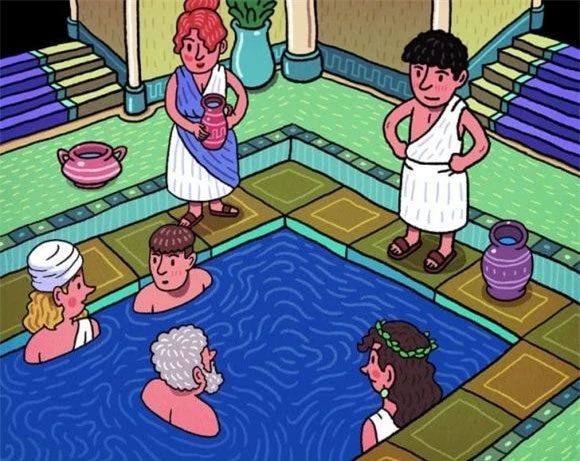
From the time of the Roman Empire to the Middle Ages, men and women bathed in public baths. These were built and maintained by the government and were a popular daily destination for bathing and socializing.
These multifunctional buildings featured hot and cold pools, storage rooms, gyms, and libraries. Some baths could accommodate up to 1,600 people at once.
2. No Privacy
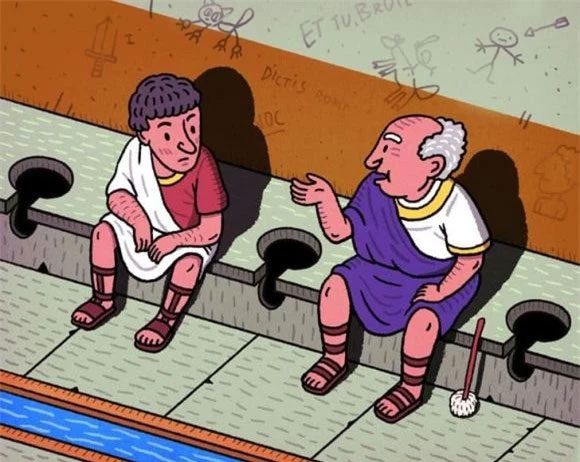
Restrooms in urban centers were often located near city parks and could hold many people at once. By the 1st century BC, sanitation was no longer considered a personal matter, as the Romans viewed it as a social activity.
3. A Place for Eating and Socializing

Ancient Romans entered the baths to eat, play, and even brush their teeth. It was a routine for them, and they didn’t think twice about performing their bodily functions while spending time with others.
During Roman times, baths were great places to meet new people and socialize. They had no qualms about enjoying beef, lamb, goat, and chicken while at the baths, playing dice and coins, and even sewing while there.
4. Shared Cleaning Tools

In ancient Rome, toilet paper did not exist, so they used a sponge tied to a stick for cleaning. Surprisingly, Roman public restrooms did not have separate stalls; thus, the sponge was returned to a bucket filled with saltwater or vinegar after use for cleaning and reuse by the next person.
5. Comfortably Dressed Loosely in Public
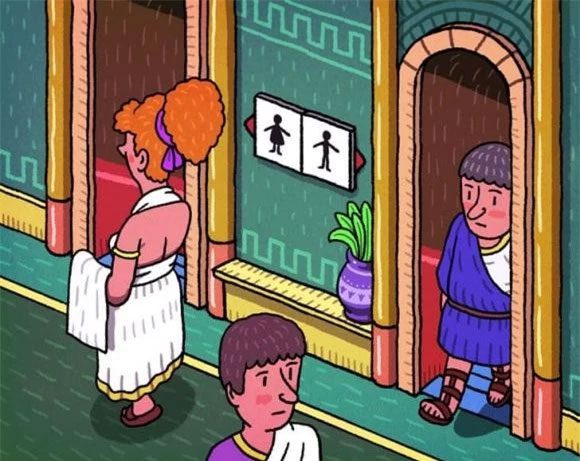
Preparation for bathing was often done at home before officially going to the baths. Thus, it was quite normal to see a man walking around the streets either naked or in just his undergarments during this era.
6. Outdoor Toilets

If you needed to use the restroom in the Middle Ages, all you had to do was find a staircase, bridge arch, or other public areas. During this period, streets served to meet a person’s natural needs.
Historian Carol Rawcliffe explains that people became more concerned about health and hygiene by the late Middle Ages. Consequently, authorities funded public restrooms to keep their cities clean. Many facilities were available for people to “relieve” themselves through holes in bridges, aimed at discharging waste directly into the rivers below.
7. Strong Odors, Especially in Summer

Additionally, the design of restrooms during this time depended on social class. Castles had special spots with holes placed right on the floor. These holes led down to the ground outside the castle, allowing individuals of higher status to relieve themselves directly into it.
This type of restroom model had the disadvantage of producing far worse odors than modern restrooms, especially in summer.
8. Manual Cleanup Required
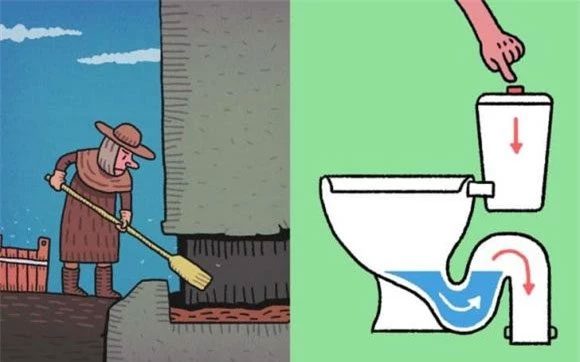
Restrooms were systematically adopted by society in the 18th century, and even by the mid-century, using restrooms had become common, with their contents cleaned by “night soil men.”
They were responsible for collecting waste when the streets were deserted. The Night Watch team provided service 24 hours a day in the best districts. However, in poorer areas, the cleaning frequency was less.
9. Waste in the Streets
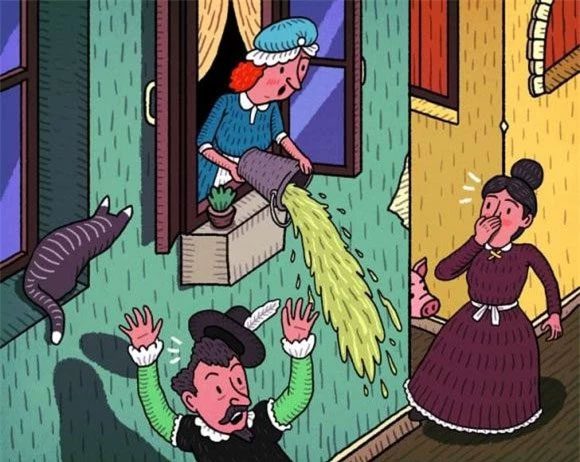
In ancient times, access to waste management was a privilege of the upper class. Therefore, when there were no restrooms in homes, the people of Edinburgh would shout, “Gardyloo” – a warning sound before someone poured waste or urine out of the window.
10. A Hotspot for Infections

Since the installation of the first drainage systems in European cities, the number of deaths from cholera and typhoid has significantly decreased. The former of these diseases seemed to spread through contaminated water.
Today, this is obvious, but researchers took many years to discover it. The first to do so was Dr. John Snow. He later identified the source of the infection in London using a map: a leaking waste tank near a residential area that contaminated the drinking well.


















































